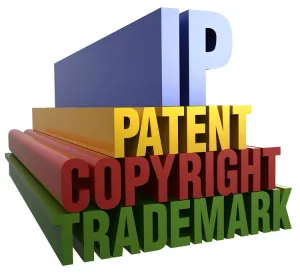Takeaway: Evidence presented by a petitioner after the petition showing public availability of a reference need not be submitted as supplemental information, but can be submitted with its reply as long as it directly addresses contentions made in the patent owner response.
In its Final Written Decision, the Board determined that Petitioner had not shown by a preponderance of the evidence that the challenged claims (10-20) of the ’155 Patent are unpatentable. The ’155 Patent relates to “a system and method of providing publishing and printing services via a communication network.”
The Board began with claim construction, noting that that the terms are interpreted using the broadest reasonable interpretation in light of the specification. The Board upheld its determination in the Decision on Institution that the preamble does not limit the scope of the claims. The Board then reviewed the term “plate-ready file,” and found that it means a file that represents a page layout that has gone through prepress processing, including RIPing, and is ready to image to a plate using either a platesetter or imagesetter. Next, the Board reviewed the term “remote printer,” which neither party construed. The Board looked to dictionary definitions and construed it to mean an offsite printing company facility accessible via a private or public communication network.
The Board then reviewed the grounds of unpatentability, beginning with the assertion that claims 10-13 and 15-20 are obvious over Jebens and Apogee. The Board first addressed Patent Owner’s contention that Petitioner has not shown that Apogee was publicly accessible before July 30, 1999, the filing date of the ’155 Patent. Petitioner contends that Apogee has a copyright date of 1998 and was made available to the public on May 28, 1998. This is supported by a declaration by an employee of the company that produced Apogee. Patent Owner alleged that the declaration does not establish that Apogee was distributed outside of the company, and that the declarant’s deposition testimony establishes that he has no personal knowledge of whether Apogee was made available to the public. Petitioner submitted a supplemental declaration with its Reply with additional records demonstrating that the reference was sent to a third party, and that third party also submitted a declaration stating that he distributed Apogee to interested members of the public beginning in 1998.
In connection with this issue, Patent Owner filed two Motions to Exclude Evidence. The Board denied the first one – attempting to exclude Apogee and the first declaration – on the grounds that it went more towards the weight of the evidence rather than admissibility. In the second Motion, Patent Owner argued that the declarations submitted with the Reply should be excluded because they constitute supplemental information, not supplemental evidence and Petitioner did not follow the procedure for submitting supplemental information. The Board disagreed with Patent Owner that evidence submitted to support public availability of a reference can never be supplemental evidence. The Board further disagreed with Patent Owner that evidence must be submitted as supplemental information in order to be admitted as rebuttal evidence with a Reply. The Board decided not to exclude the declarations because they directly responded to Patent Owner’s argument that Petitioner failed to show distribution of Apogee outside of the company, and Patent Owner had fair opportunity to respond to the declarations by filing motions for observation regarding cross-examination.
The Board then found that Petitioner had shown that Apogee is prior art. The Board noted Petitioner’s evidence that Apogee was printed at least as early as April 1998 and that the third party had distributed it to potential customers at conferences.
Next, the Board reviewed the merits of the ground. Patent Owner asserted that Jebens does not teach the step of generating a plate-ready file and providing that file to a remote printer, and that Apogee does not cure this defect. The Board stated that the claims require that the plate-ready file be received by a remote printer at an offsite facility. The Board found that Jebens does not teach a plate-ready file, and that while Apogee does, it does not teach providing the file to a remote printer. Further, the Board found that Petitioner had not shown any evidence that a person of ordinary skill in the art would have combined Jebens and Apogee in such a way that a plate-ready file would have been produced at Jebens’ host facility rather than at its printing facility. Therefore, the Board found that this ground had failed, as well as the assertion that claim 14 is obvious over Jebens, Apogee, and Andersson.
The Board then turned to the remaining grounds – whether claims 10-13 are obvious over Dorfman and Apogee; whether claims 14-15 are obvious over Dorfman, Apogee, and Andersson; and whether claims 16-20 are obvious over Dorfman, Apogee, Andersson, and OPI White Paper. The Board found again that Petitioner had not shown that Dorfman produced the plate-ready file anywhere other than at its production printing system. Therefore, the Board was not persuaded by these grounds either.
Eastman Kodak Co., Agfa Corp, Esko Software Bvba, and Heidleberg, USA v. CTP Innovations, LLC, IPR2014-00788
Paper 35: Final Written Decision
Dated: November 25, 2015
Patent 6,738,155 B1
Before: Howard B. Blankenship, Benjamin D.M. Wood, and Brian J. McNamara
Written by: Wood
Related Proceedings: IPR2014-00789; IPR2014-00790; IPR2014-00791; IPR2013-00474; IPR2013-00489



 />i
/>i

